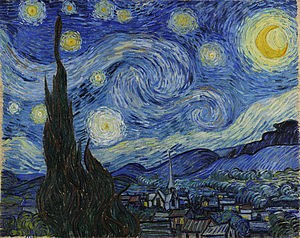Why do six million people flock to see the Mona Lisa each year? Why did the Louvre in Paris pay seven million dollars to create a controlled-climate room just for this work of art? The canvas is even protected with bulletproof glass. The painting has been stolen, but cannot be insured because it’s considered priceless. Though the artist, Leonardo Da Vinci, was renown, the prevalent belief is that his subject was a 24-year-old mother of two—no one famous or special. Why does this painting get so much attention?
The Mona Lisa (1503-1519) has remained enormously popular for several centuries, way before Dan Brown’s novel became a bestseller. Many say the woman’s enigmatic smile draws people in. What do you say? Does she look like she knows something? Or does her countenance reflect some kind of peace?
Another famous painting, The Scream (1893), by Edvard Munch throbs with the strong emotions of fear, terror, doubt, pain, and suffering. The painter wrote down his inspiration for the work saying…
“I was walking along the road with two friends – the sun was setting – suddenly the sky turned blood red – I paused, feeling exhausted, and leaned on the fence – there was blood and tongues of fire above the blue-black fjord and the city – my friends walked on, and I stood there trembling with anxiety – and I sensed an infinite scream passing through nature.”
Some editions of Arthur Janov’s book, The Primal Scream, used Munch’s painting on the cover. The ghost-like face has been recreated in movies and Halloween costumes. Clearly, the painting struck a chord.
Van Gogh’s, Starry Night (1889), is a profoundly beautiful and mysterious work of art. The artist painted the night sky from the view out his asylum window. He admitted himself to the hospital after his breakdown in 1888, when he mutilated his ear.
Van Gogh wanted to believe in an afterlife. He wanted it to be true and associated it with a larger universe portrayed by the night sky. He wrote, “”It would be so simple and would account so much for the terrible things in life, which now amaze and wound us so, if life had yet another hemisphere, invisible it is true, but where one lands when one dies.”
Don’t we yearn for the same thing—the glorious larger story that will one day wrap around our finite and sometimes tragic smaller stories?Continue reading










